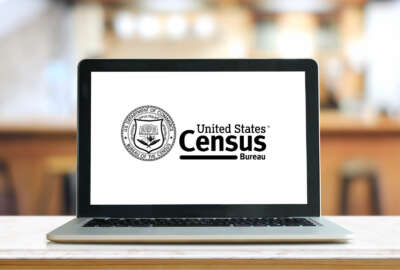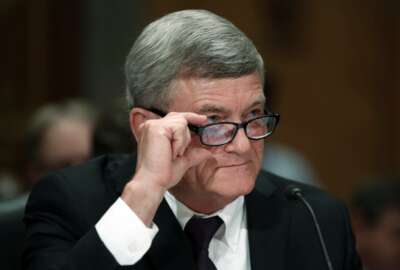
Satellite data gives Census Bureau a helping hand in launching 2020 ground game
Thousands of temporary Census Bureau hires will lay the groundwork for the rest of the 2020 population count, later this month knocking on doors to ensure the a...
Best listening experience is on Chrome, Firefox or Safari. Subscribe to Federal Drive’s daily audio interviews on Apple Podcasts or PodcastOne.
Later this month, tens of thousands of temporary Census Bureau hires will lay the groundwork for the rest of the 2020 population count, knocking on doors to ensure the agency has a complete list of addresses when the bureau mails out census forms in the spring.
But even with a fraction of the address canvassing workforce compared to the 2010 count, the team behind the 2020 count has already accomplished the majority of its work through satellite imagery.
Steven Dillingham, director of the Census Bureau, told reporters Monday that the bureau has launched a “soft opening” of its canvassing operations, and would kick off a “full-fledged” national canvassing effort later this month.
In total, the agency will only hire about 40,000 address canvassers for the 2020 count, a significant reduction compared to the 150,000 canvassers the bureau hired for the 2010 count.
The bureau claims it can do more with less through its Block Assessment, Research and Classification Application (BARCA), which uses satellite imagery data from the National Geospatial-Intelligence Agency to track new housing developments, changes to existing homes and other housing units that did not previously exist.
Through this satellite imagery, the bureau has already managed to identify 65% of the addresses where it will need to mail census forms. That leaves another 50 million addresses — about 35% of the work — for census canvassers to verify between now and mid-October.
Deirdre Bishop, the bureau’s geography division chief, said the work BARCA has saved the bureau’s 2020 team has been a “massive accomplishment.”
In 2010, address canvassers “walked around every city block,” Bishop said, and covered every rural area in the country. “As we prepare for the 2020 census, we’ve been able to do much of this work in the office.”
Address canvassers will travel their routes carrying laptops loaded with an application that contains bureau maps and a list of addresses they’ll have to validate.
The bureau began building its master address list in 2013. Using administrative data from the Postal Service, Bishop said the bureau added 5.5 million addresses to its list of more than 150 million addresses, and was able to verify 100 million through state, local and tribal records.
The bureau has also tweaked training for its in-field canvassers. The training now allows for temporary hires to complete a significant portion of their training online, rather than in a classroom setting.
Unlike the 2010 count, canvassers are expected to knock on doors on their route to verify each address, as well as to inquire about additional housing units.
“It is so important that we have a complete address list in order to do the mail-out of the questionnaires,” said Marilyn Sanders, the bureau’s Chicago regional director.
The majority of households will receive their 2020 forms through the mail in March. Most households will first receive a postcard inviting them to fill out the census questionnaire online. However, they’ll receive a paper questionnaire in April if they haven’t yet answered through the website. The remaining households will receive a paper census form in their first mailing in March.
While the Census Bureau partners with several agencies, Dillingham said the bureau maintains an “excellent track record” in protecting its data, and as part of its cybersecurity efforts, the bureau will constantly monitor for vulnerabilities “on a continuing basis.”
“Attempts are made to sometimes circumvent some of these safeguards, so we’re very diligent and we’re monitoring 24 hours a day, seven days a week with the best tools, the best technologies and the best minds,” Dillingham said.
Bureau officials expect about 60% of the population will respond online, which reduces the need for field offices and staff, but members of Congress have expressed concern about that shift in resources.
More than a dozen Democratic House members from Illinois, in a letter to Dillingham on Monday, stressed that “the importance of physical presence and follow-up cannot be overstated.”
“Local hiring efforts are imperative in understanding and building trust within hard-to-count communities, and they are more proficient in assisting their own community members to complete the Census questionnaire,” the members wrote in a letter Monday.
Copyright © 2024 Federal News Network. All rights reserved. This website is not intended for users located within the European Economic Area.
Jory Heckman is a reporter at Federal News Network covering U.S. Postal Service, IRS, big data and technology issues.
Follow @jheckmanWFED





